Those who can drive a McLaren around the block and decide on such slender evidence that this is the right car on which to drop a six-figure sum of hard-earned currency, I salute you.
Were I to do such a thing – or rather, were I possessed of the means to do such a thing – I’d conclude simply that this was a spectacularly wonderful car for someone else and adjust my thinking in a more appropriately Italianate direction.
Two thousand miles, from a one-pub hamlet in the Welsh borders to Geneva via Spa and the Nürburgring and back again, provides a different perspective. And plenty of time in which to wonder how McLaren got from that place to this, from the botched launch of the tortuously entitled MP4-12C to the reveal of the all-new 720S, the hottest ticket at the most important motor show on earth.
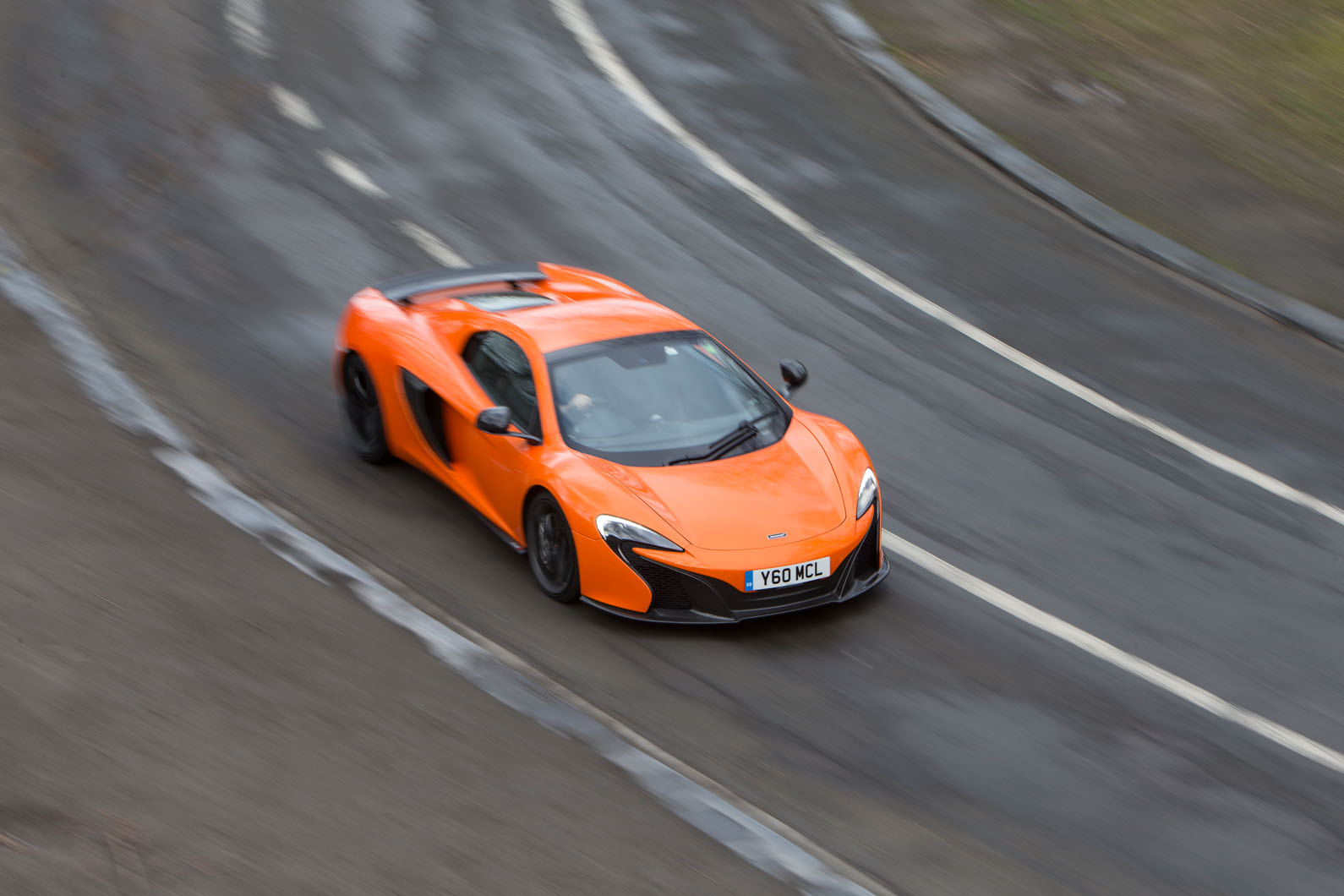
McLaren has never replaced a car before. Its first road cars, the iconic F1, the SLR project with Mercedes, even the original M6GT, stood alone, as has the P1, the only McLaren from the current era to cease production. So when I put it to one senior member of McLaren management that the replacement of what they call P11 (the code that covers the entire Super Series cars, from 12C, past 650S to 675LT) was the single most important moment in the modern history of McLaren Automotive since the launch of the 12C, I didn’t expect the words to be batted back at head height. “Oh no,” he said. “It’s far more important than that.”
You've probably heard about the new 720S, so for now join me in its predecessor, the humble, 641bhp 650S. We’re doing a steady 150mph along a southbound stretch of autobahn and it has just started to rain. The question is, what should be done about it? The information that adds up to an answer has been both two days and six years in the accumulation.
Six years. Is that all it has been since Antony Sheriff delivered the first 21st century McLaren? He didn’t last long at the company, but his vision was for a state-of-the-art, F1-inspired, carbonfibre-tubbed supercar that would be lighter, stiffer, stronger and faster than anything else similar money would buy. And he delivered, in spades: the MP4-12C hit all its pre-designated marks with the certainly of Gielgud treading the boards at the Old Vic.
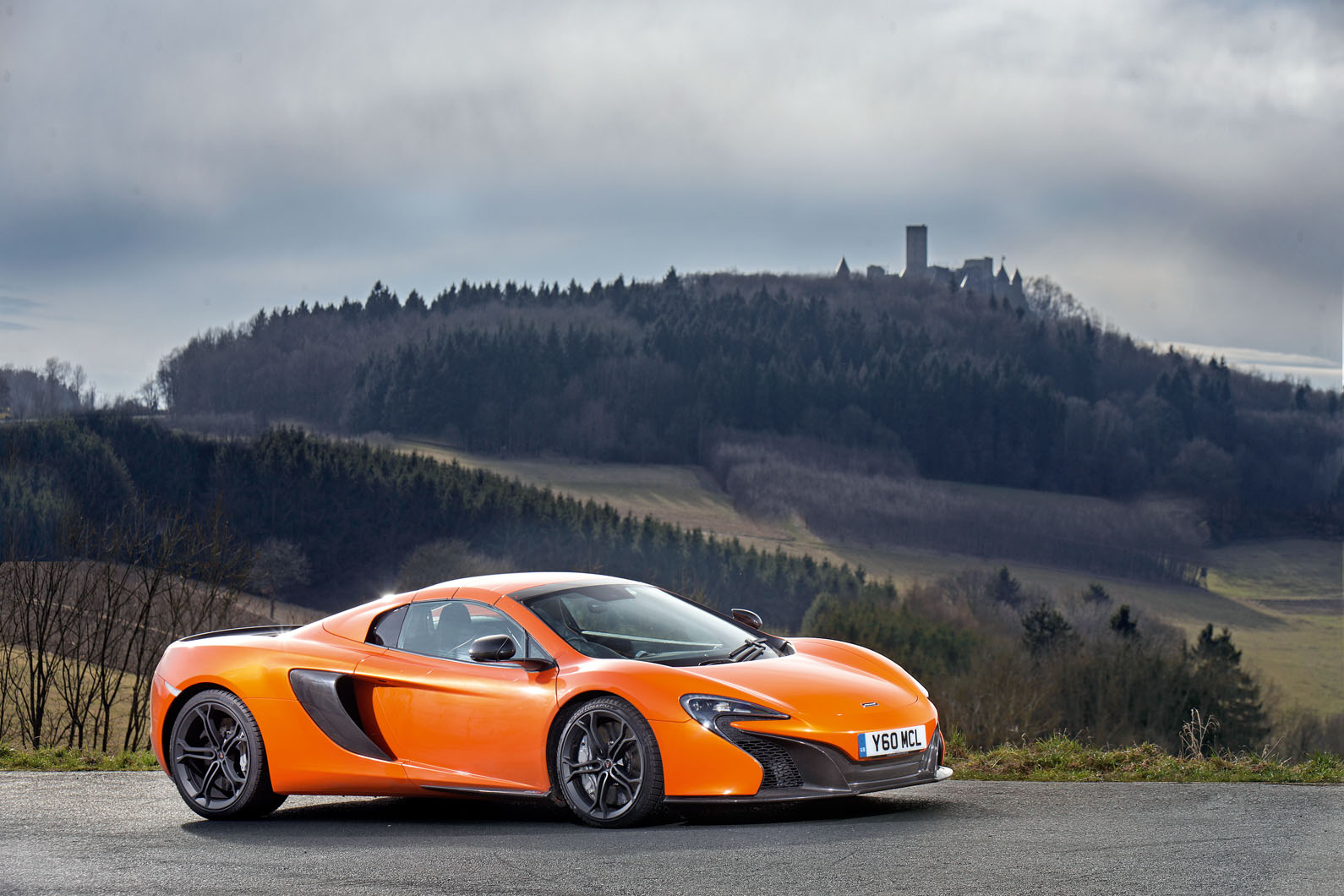
And yet, so too was something missing. The reality was clearest to see at the 2011 edition of Autocar’s annual quest to find Britain’s Best Driver’s Car. Held that year at Rockingham on a track configuration that absolutely did not play to its strengths, the 12C was still a second a lap quicker than anything else out there, including a brand new Porsche 911 GT3 RS. Yet when the votes were counted, it came home fifth overall, shockingly placed by one judge behind a Vauxhall Corsa VXR. The 12C was capable but aloof, a car so focused on going forward it appeared to have forgotten the bloke behind the wheel. “No rider wants to be outwitted by the horse,” was one tester’s gloomy but pin-sharp assessment. And that’s before you consider the sometimes inexact construction quality, a sat-nav system that didn’t work at first and was then rubbish when it did and exterior looks that were described, more unkindly than unfairly, as being those of a Korean concept car.
The sat-nav remains rubbish: not quite so knuckle-gnawingly awful as a pre-DB11 Aston’s nav, perhaps, but close. But the car the system is trying to direct is something else.
My route from home to the coast, across the water and to Spa was as dull as ever, save a brief detour to Woking to visit the home of McLaren and catch up with an old friend, in the shape of the actual F1 I road tested for this magazine no fewer than 23 years ago. It seems incredible to me that the 650S, McLaren’s staple product, has more power and better acceleration than the totemic F1, the car I’d once pompously and entirely inaccurately predicted would be the fastest car the world would ever know.
Spa is important because the old circuit is where, in 1968, McLaren won its first grand prix and its founder, Bruce McLaren, his last. If you want a reminder of how F1 has changed, and not always for the worse, Bruce’s M7A was one of just six cars to finish a race overshadowed by the death the day before of Ludovico Scarfiotti, who, after Jim Clark and Mike Spence, became the third F1 driver to die that season. A fourth, Jo Schlesser, lost his life two races later.
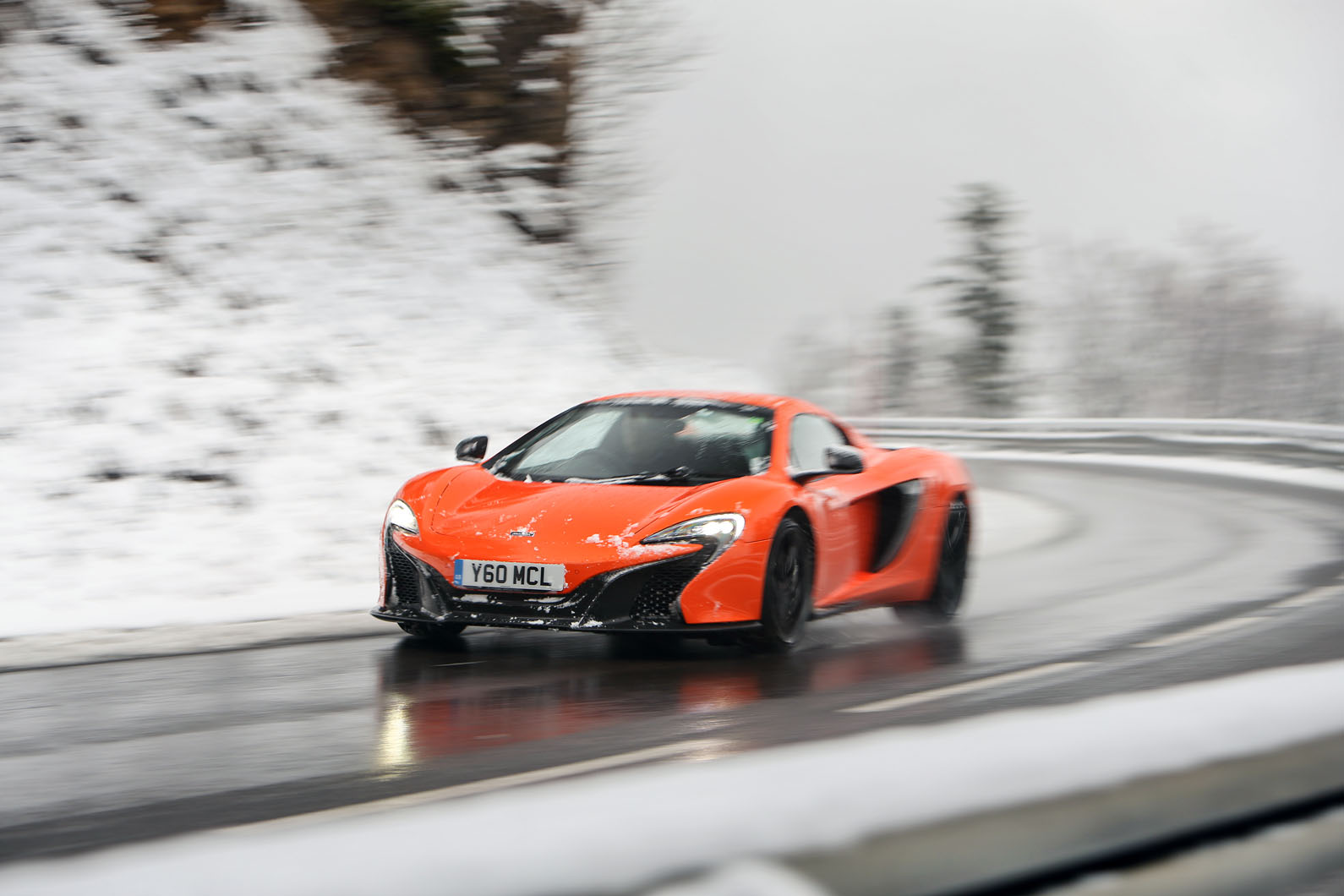
As we ate frites outside the chip shop at the exit of the fearsome Masta kink, we thought about Bruce hammering down the straight, summoning the mental strength not to lift. And then we went to the banked turn at Stavelot, where the cars would stream through and howl back up towards the pits. That day, in a car without wings, with less than half the power of modern machines and on treaded tyres, Bruce averaged over 147mph for the entire race.
The drive to Spa may have been boring but it spoke volumes for how effectively the 650S works as a device for doing distances. The visibility forward and to the side is as good as I’ve known that of a mid-engined car to be, and the ride quality is in a different postcode to that of any rival. It’s quiet too, and has superb seats. To use one simply as a weekend recreation is to build a mansion and then live only in the kitchen.
The journey from Spa to the Nürburgring was anything but dull. The route I know well, but never has it been so comprehensively devoured as it was by the 650S that day. This is McLaren territory: open, sweeping and fast, roads that, even on Pirelli Sottozero winter tyres, the 650S dispatches without apparent effort. At low speeds the acceleration sometimes seems a little lacklustre, but you need to spot the blinking traction control light to realise why. But once it grips, you still feel caught in the pressure wave of a small bomb detonating behind you. I’m chasing editor Mark Tisshaw in a 570S and it’s interesting to see how differently it works. The 570S looks lighter on its toes, more willing to change direction but also more easily unsettled by ridges and surface changes that the 650S scarcely notices. All things are relative: by any normal standard both are imperious.
The ’Ring is shut, as we knew it would be, and besides, lapping any track on winter tyres is probably some distance short of a good idea. But we had to come here, had to visit the place where, 10 years before his Spa triumph, an unknown 20-year-old called Bruce McLaren took part in his first Formula 1 race and came home fifth. Motor Sport magazine described his drive as ‘outstanding’, a considerable understatement given that he was hobbled by the sizeable impediment of driving a Formula 2 car at the time. It was right here, amid these tortuous turns, that the name ‘McLaren’ arrived in the collective psyche of the global motor racing community.
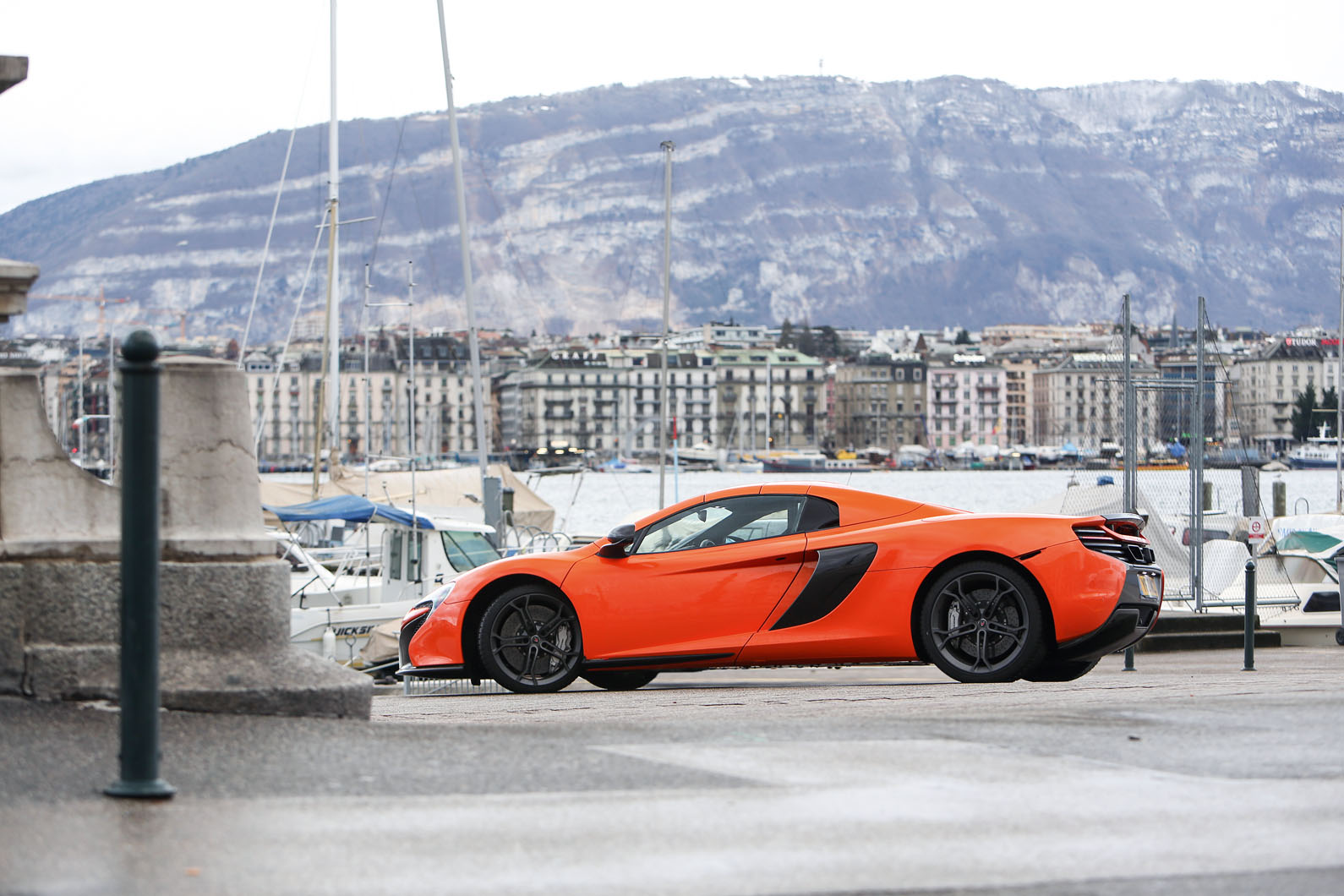
Next for us is the autobahn and the rain. I’m not sure why, and as ridiculous as it looks on paper, but I simply pegged back the speed of the 650S from 150mph to 135mph. I expect it’s more perception than reality, but at 150mph you can sense the 650S just beginning to try. At 135mph it is not extending itself at all: the car just skims across the surface of the planet, twin-turbo V8 singing contentedly with deep reserves of everything in every direction. It is its natural gait. I have a memory of a long curve on the autobahn, the McLaren settled on its springs by its own downforce, stable even in the slight crosswind, steering loaded and in constant correspondence with my fingers. In that moment, I looked in the mirror and saw the micro-climate of Sottozero-generated mist the 650S was towing towards Geneva. The McLaren had me safe and secure in the eye of a storm of its own creation, and I loved every second of it.
You don’t go fast in Switzerland, at least not if you want to stay solvent. And, as they tend to in this country, soon the road started to climb as rain turned first to sleet and then very definitely to snow.
You may ask what I thought I was doing 4000ft up a mountain in March, driving a rear-drive, mid-engined 641bhp supercar, and all I can tell you is that it seemed like a good idea at the time. And unlike my more calamitous capers, it still does. We hoped it would produce pictures unlike those you see in most supercar tests, and I hope you agree we delivered on that. But I also wanted to see how the 650S coped when taken as far from its comfort zone as you could go, this side of pushing it off a cliff to see if it will fly. And even here, even when the road disappeared beneath the snow, it kept its composure. It didn’t twitch and it wasn’t shut down by its safety systems; only the occasional – and entirely amiable – slow-motion slide suggested that this wasn’t entirely what it had in mind for a trip to the continent.
And then we were on the shores of Lake Geneva, just down the hill from where the 720S would be unveiled the very next day. A trip through five countries, through sun, rain and snow, through times when 135mph felt slow and others when 10mph felt terrifyingly fast, was over.
Before we set out I wondered whether I’d conclude that the 650S was even in need of replacement at all, but I can see now that it is. Elements have aged, particularly its interior and rear styling, and there is no competitor more able or ferocious than the Ferrari 488 GTB.
But I was still staggered by this car all over again, not just by what it is and what it can do, but most of all by where it has come from. Exactly how McLaren reconfigured the recipe to turn the underdone original 12C into the perfectly cooked 650S is a story that still needs telling. And it is important, because without it would we now be looking forward to finding out how on earth the 720S can materially move the game on from here? I don’t know. So maybe the most important car in the modern history of McLaren Automotive is in fact neither the old 12C nor the new 720S. Perhaps you’re looking at it right now: it was the 650S alone that established McLaren as a credible rival to Ferrari, and it is on its shoulders that the 720S now stands. We look forward to making its acquaintance.

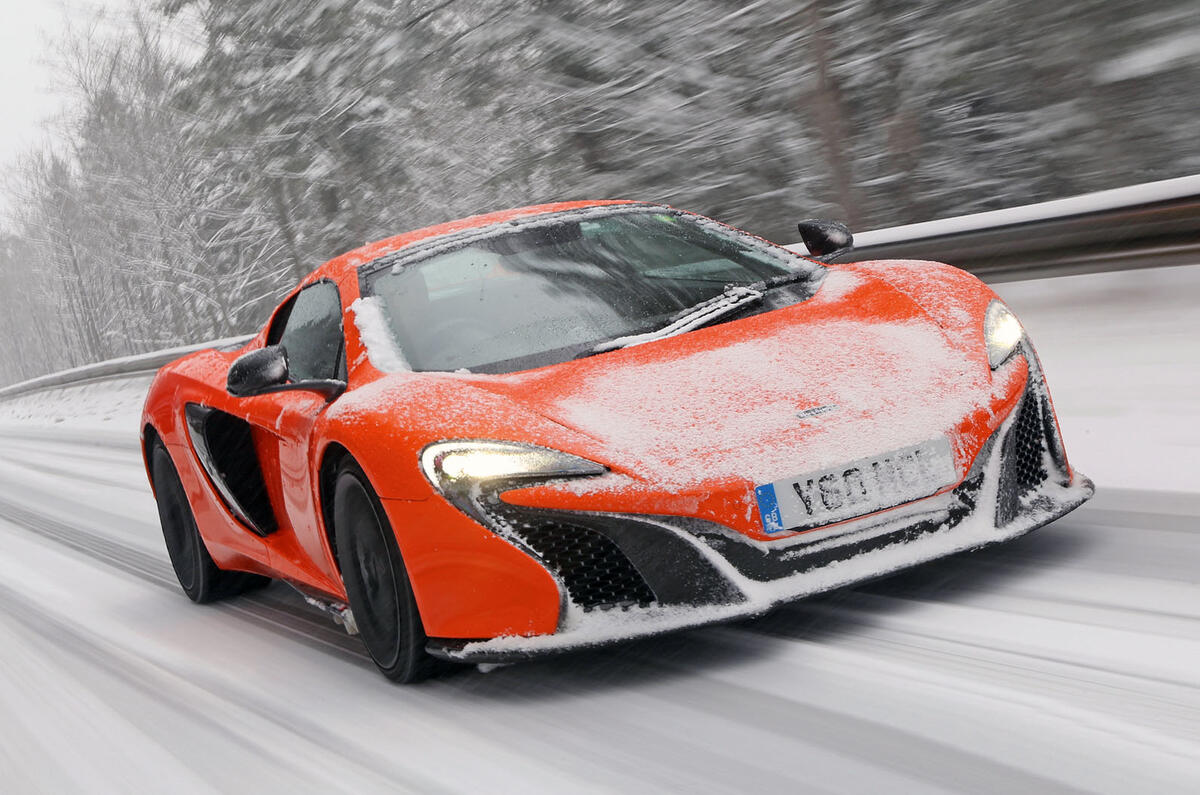
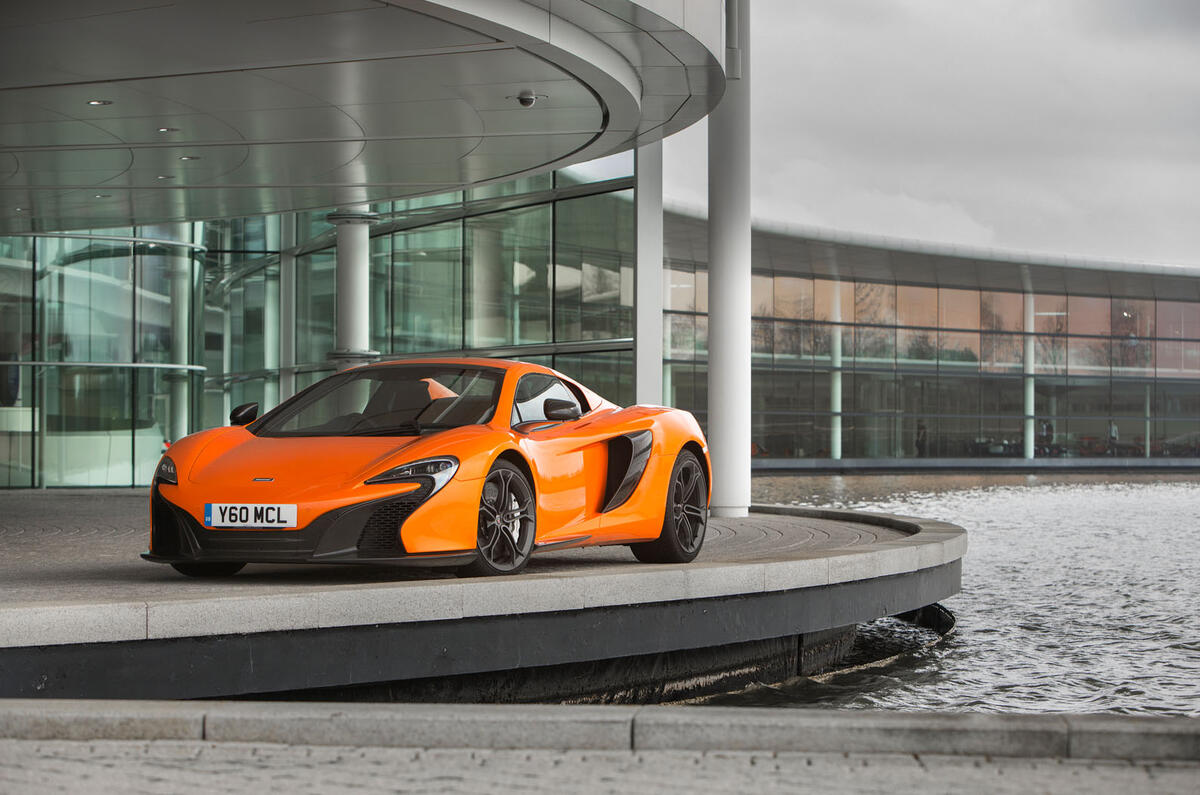
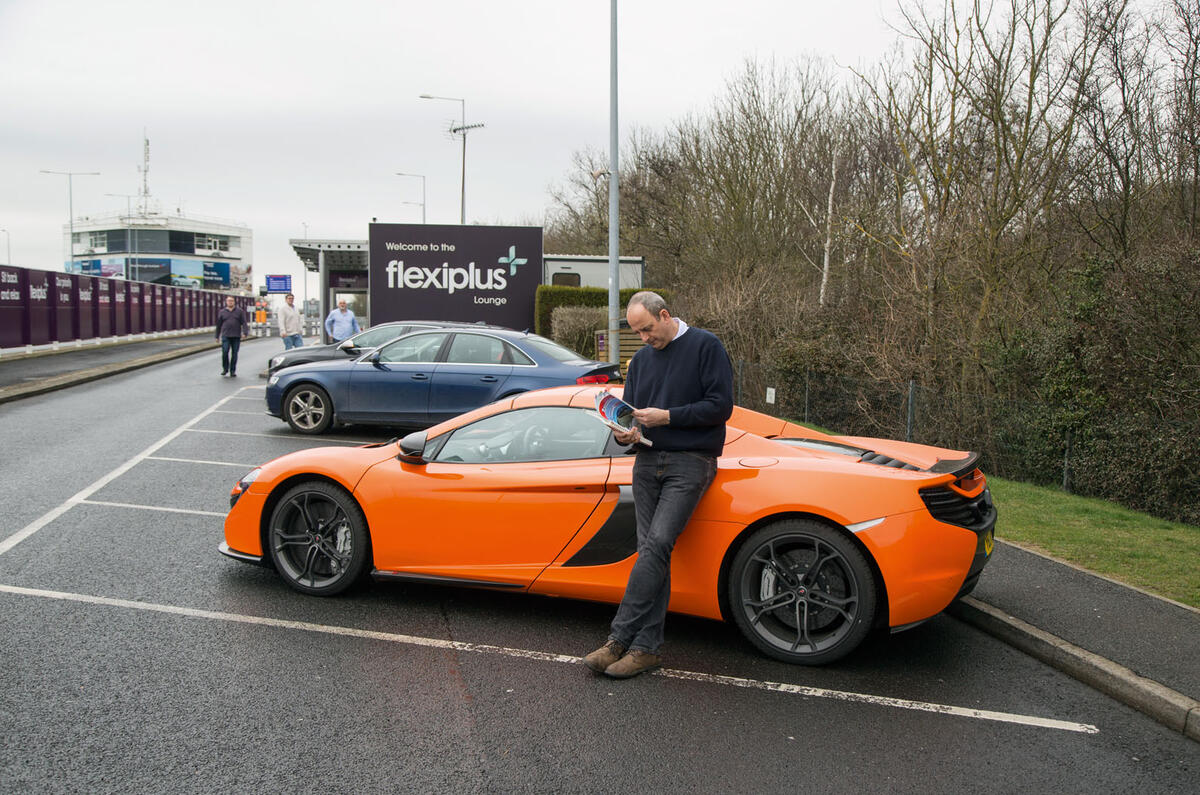


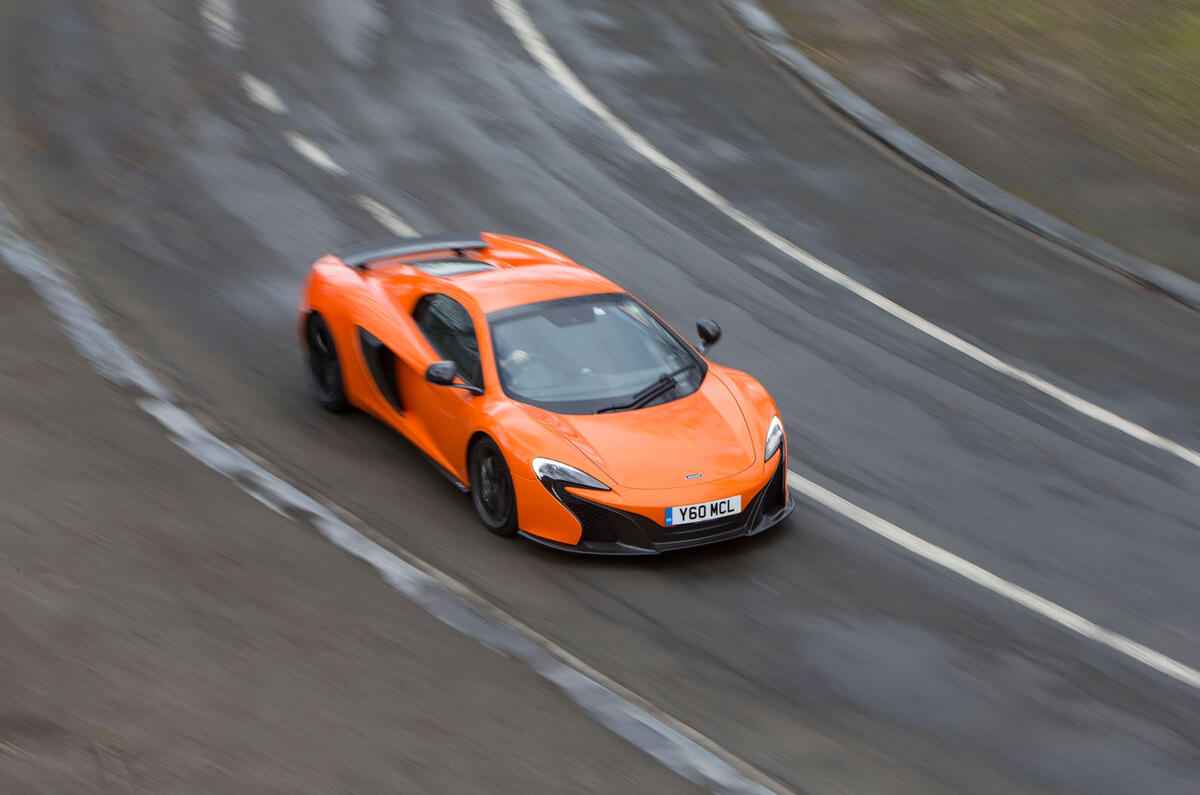
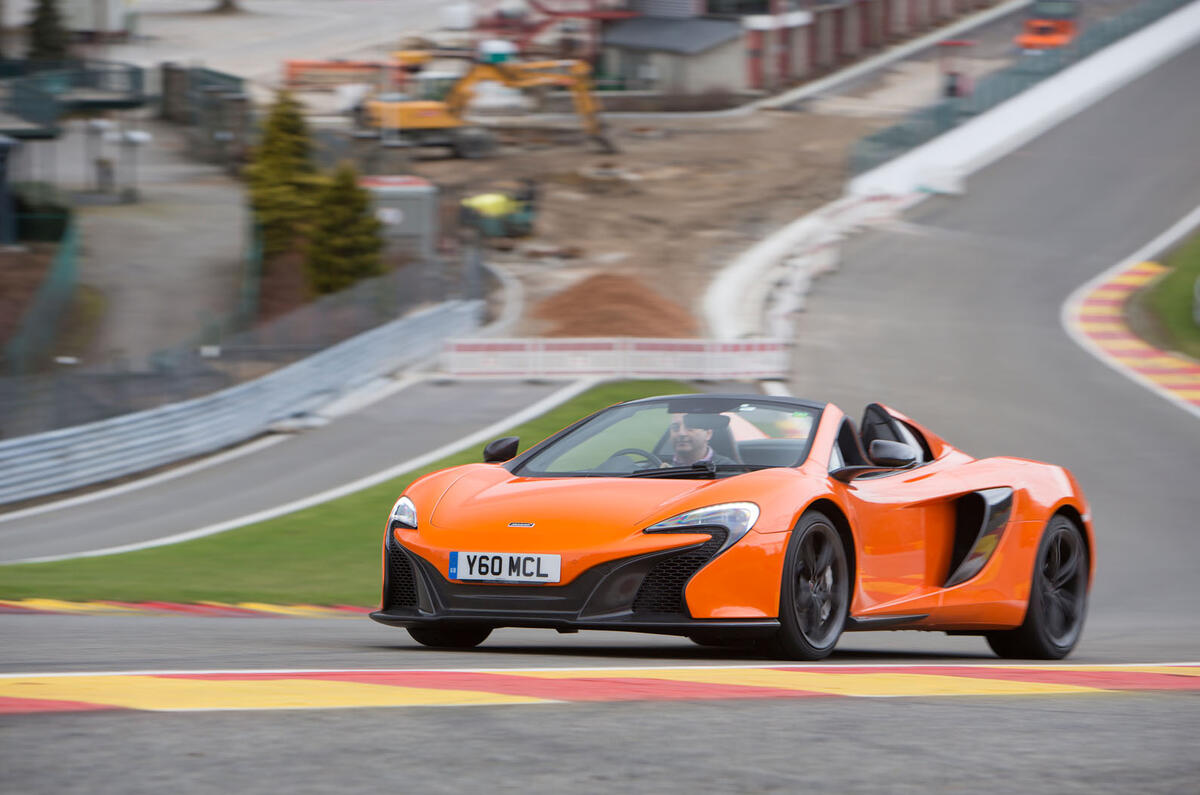
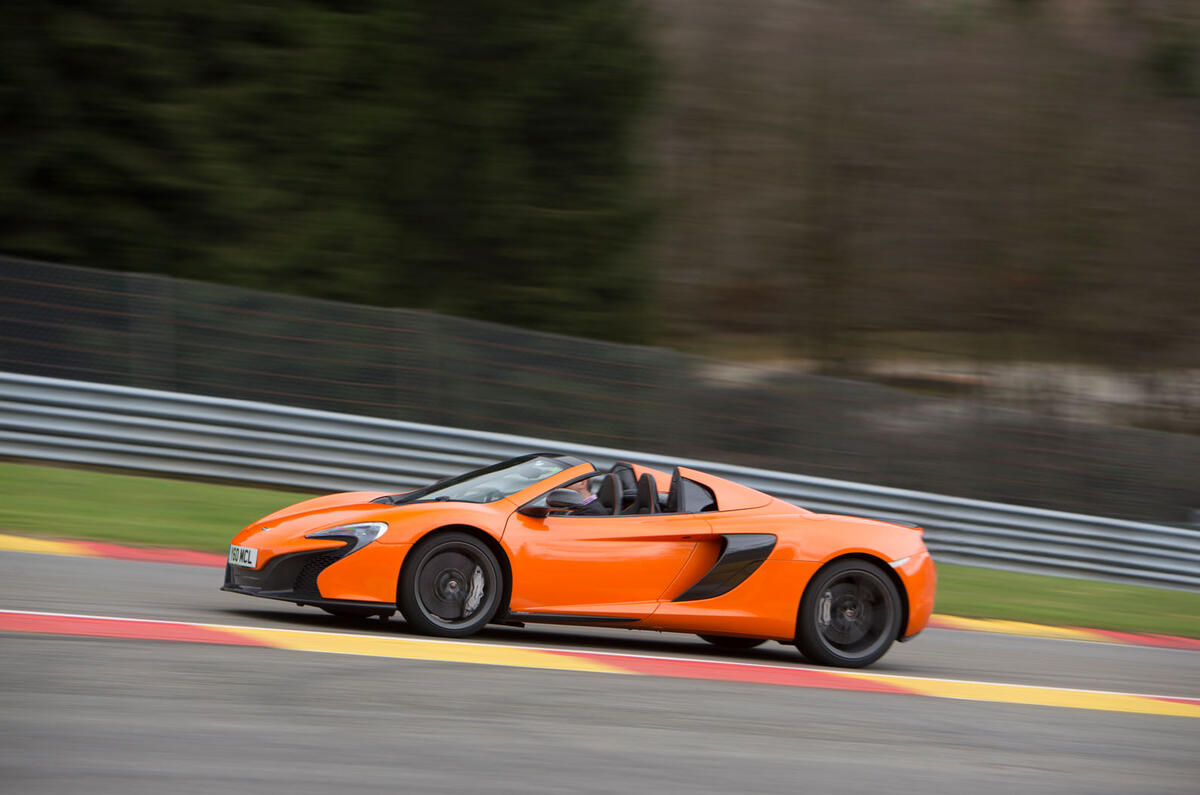
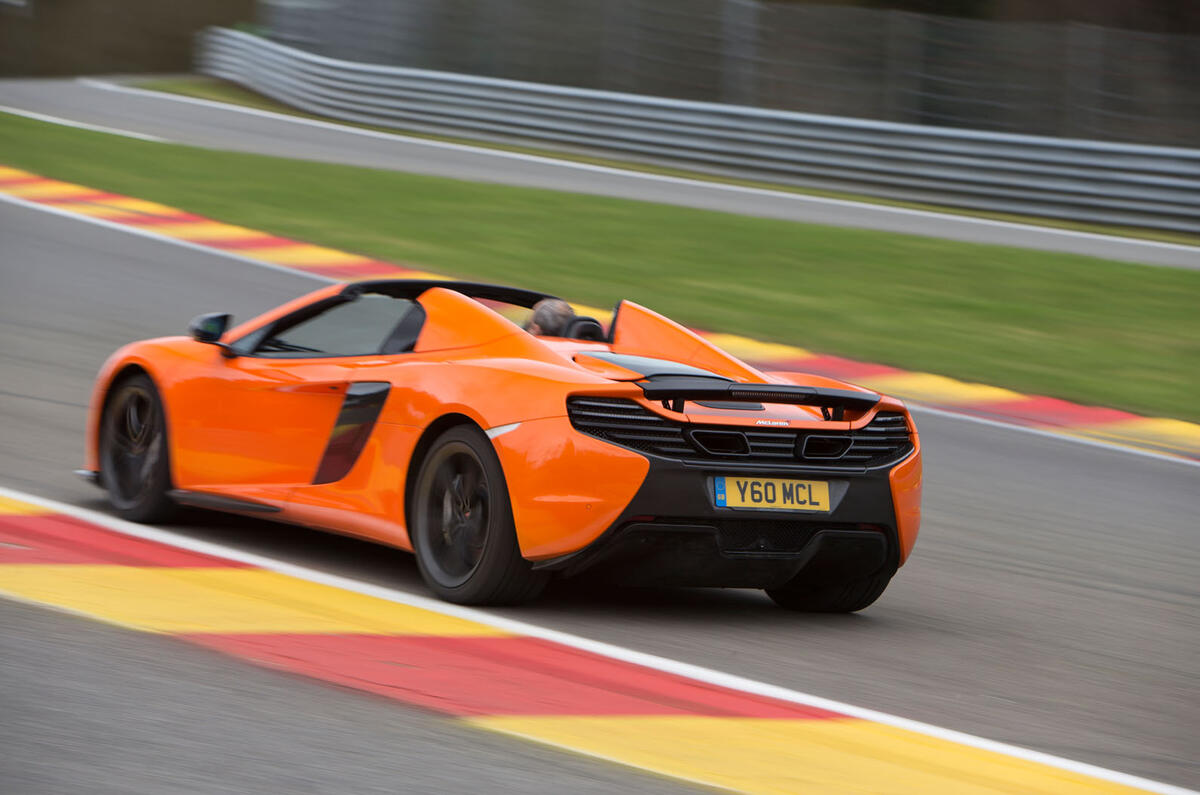
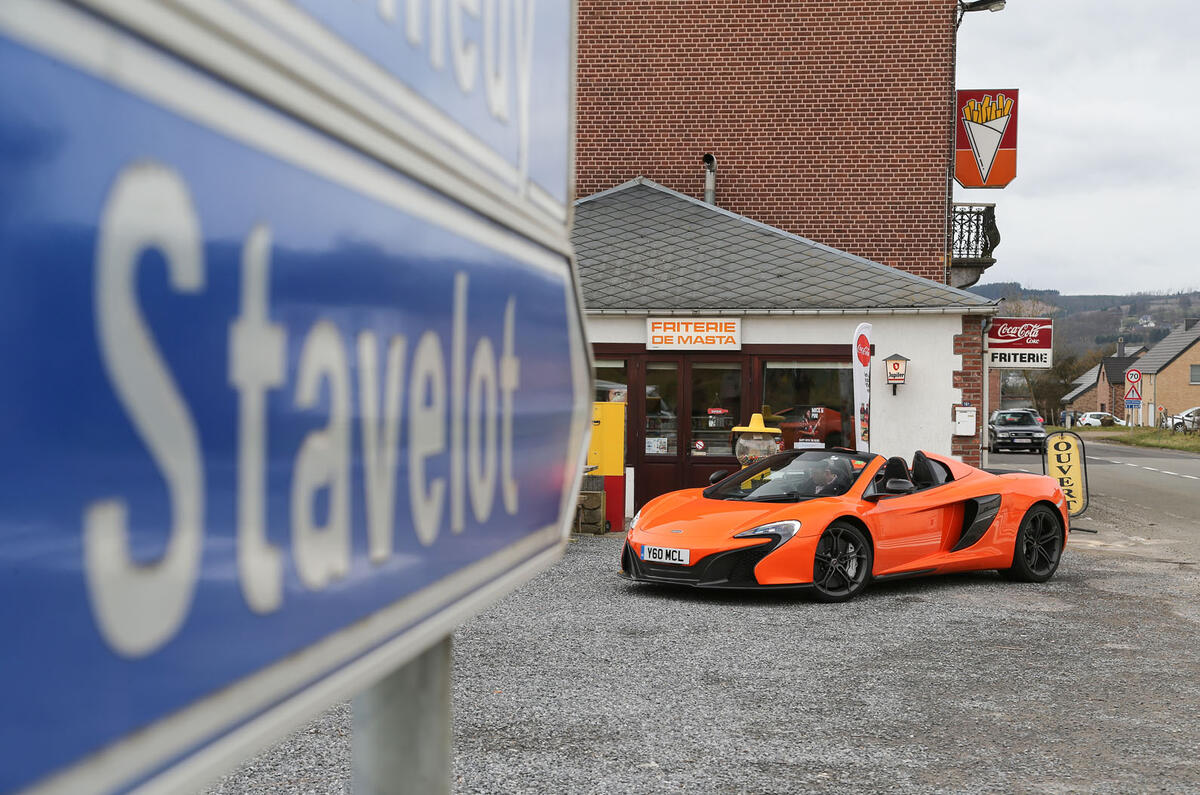
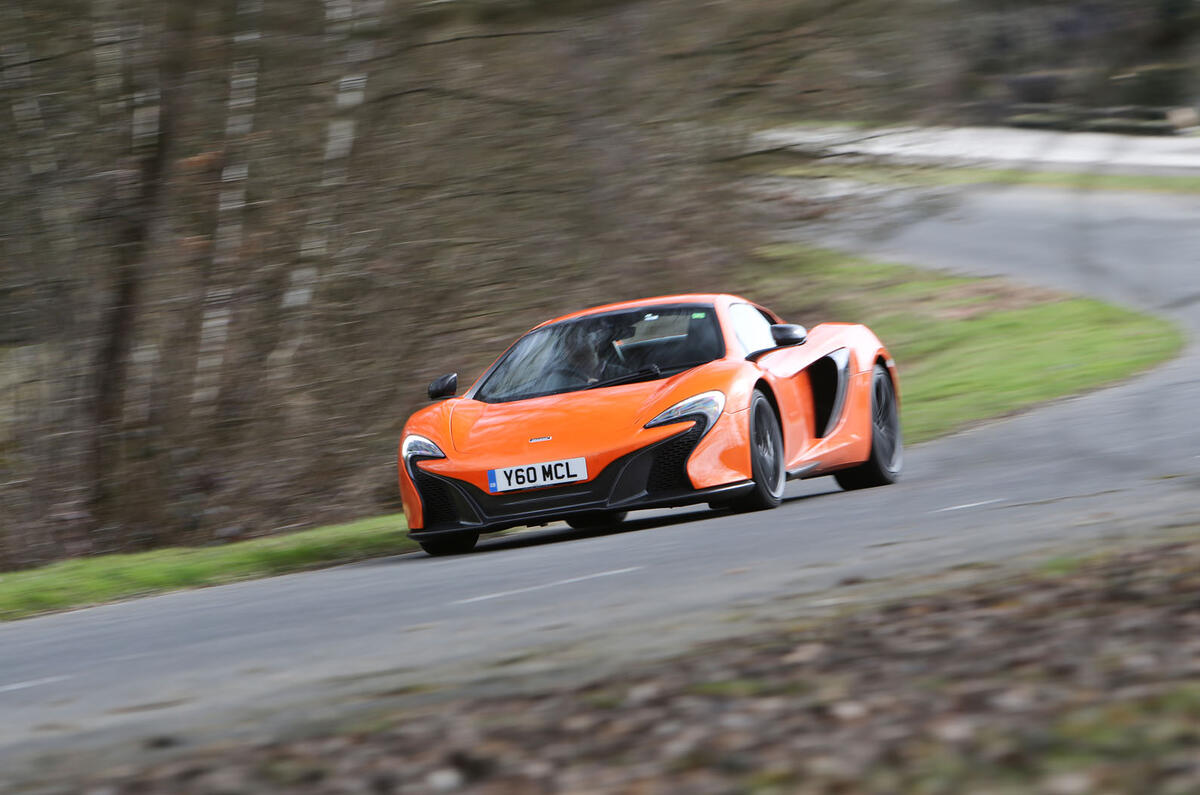
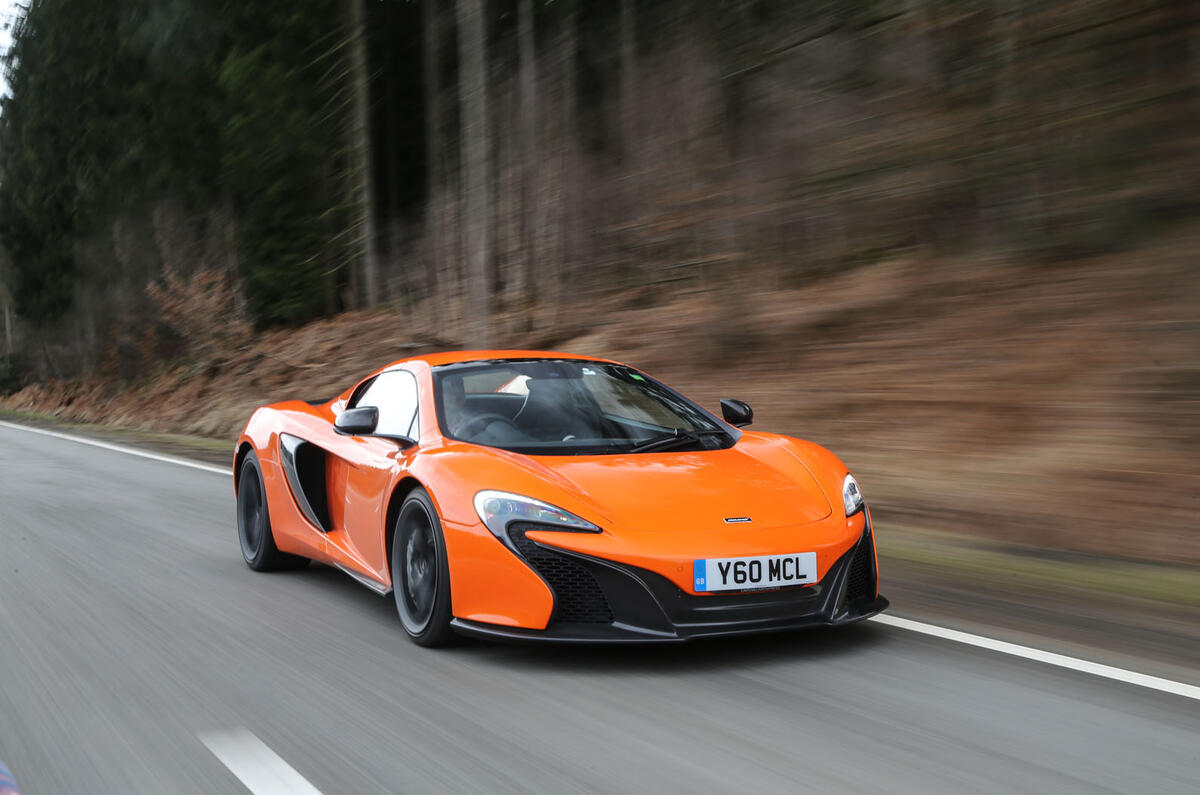
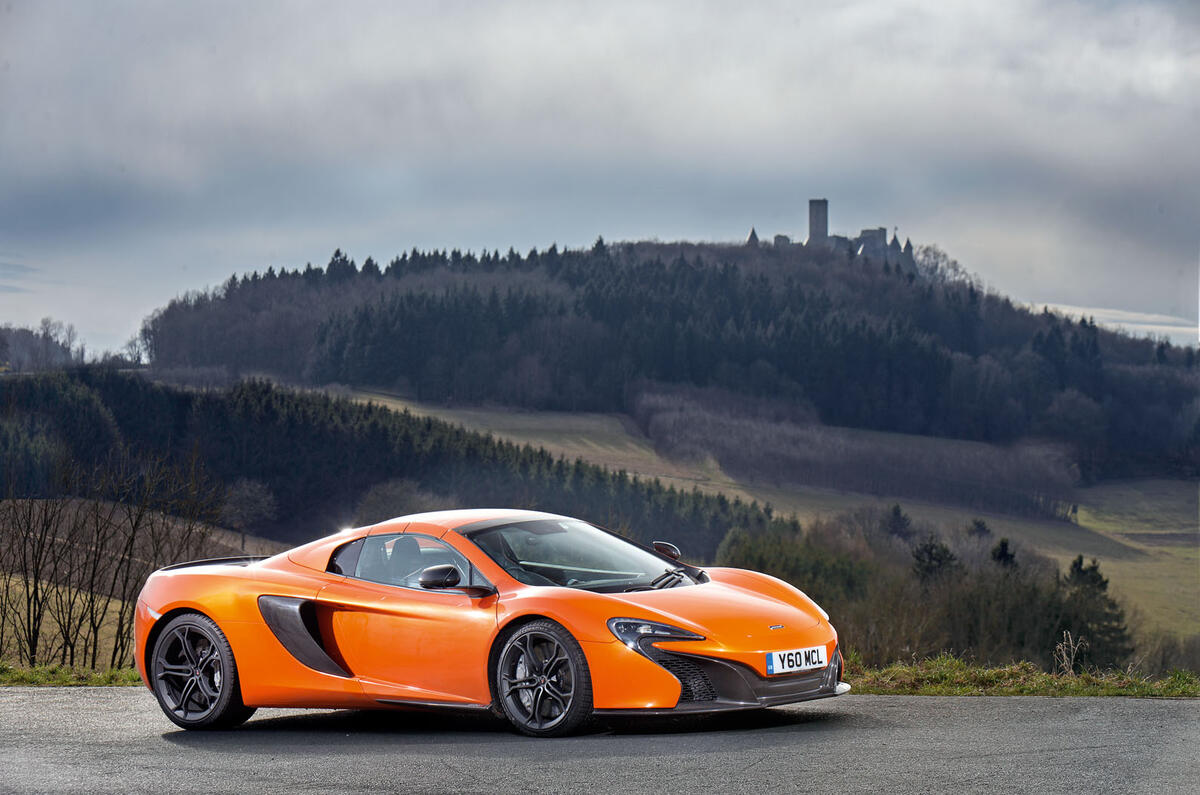
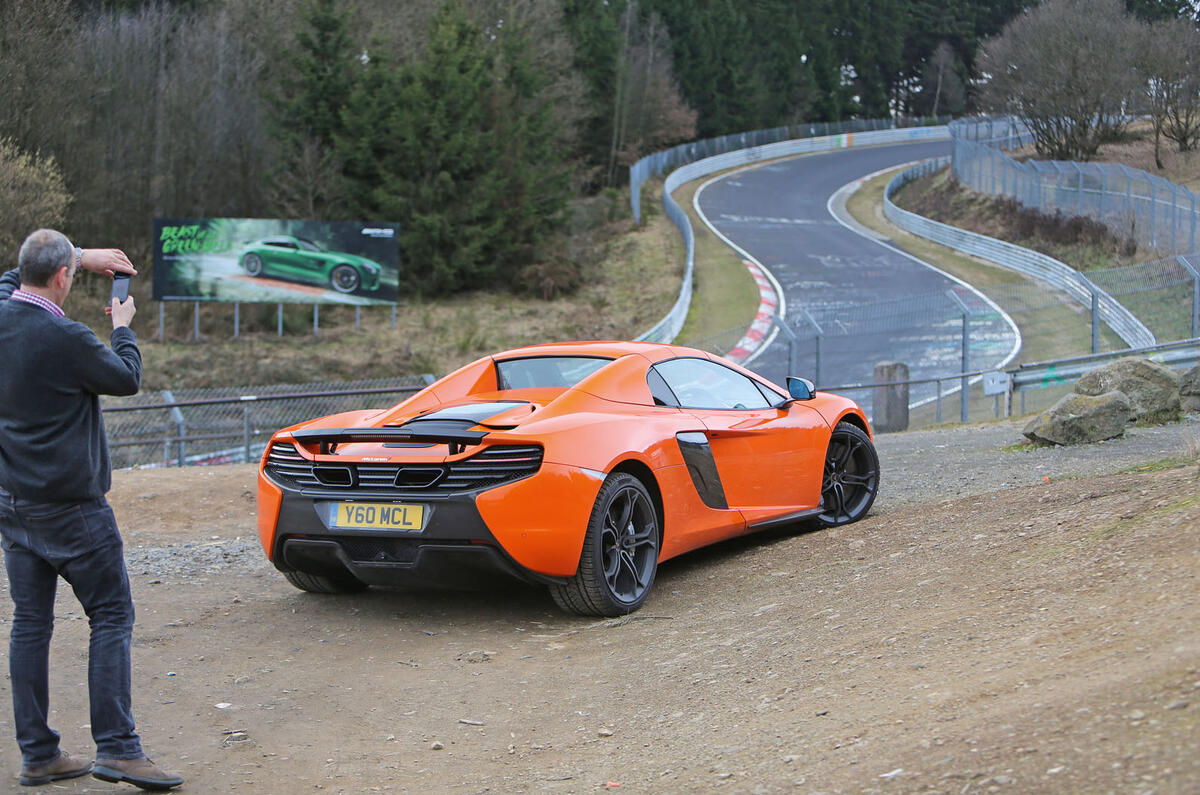
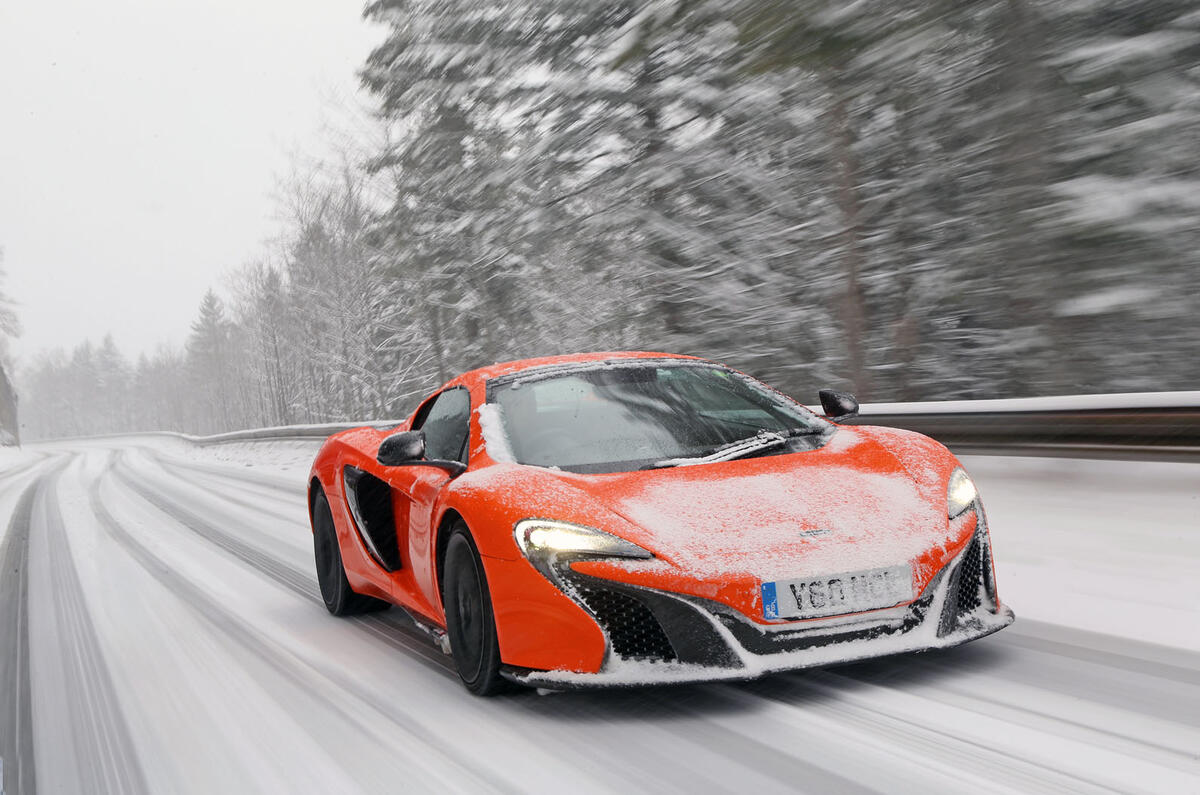
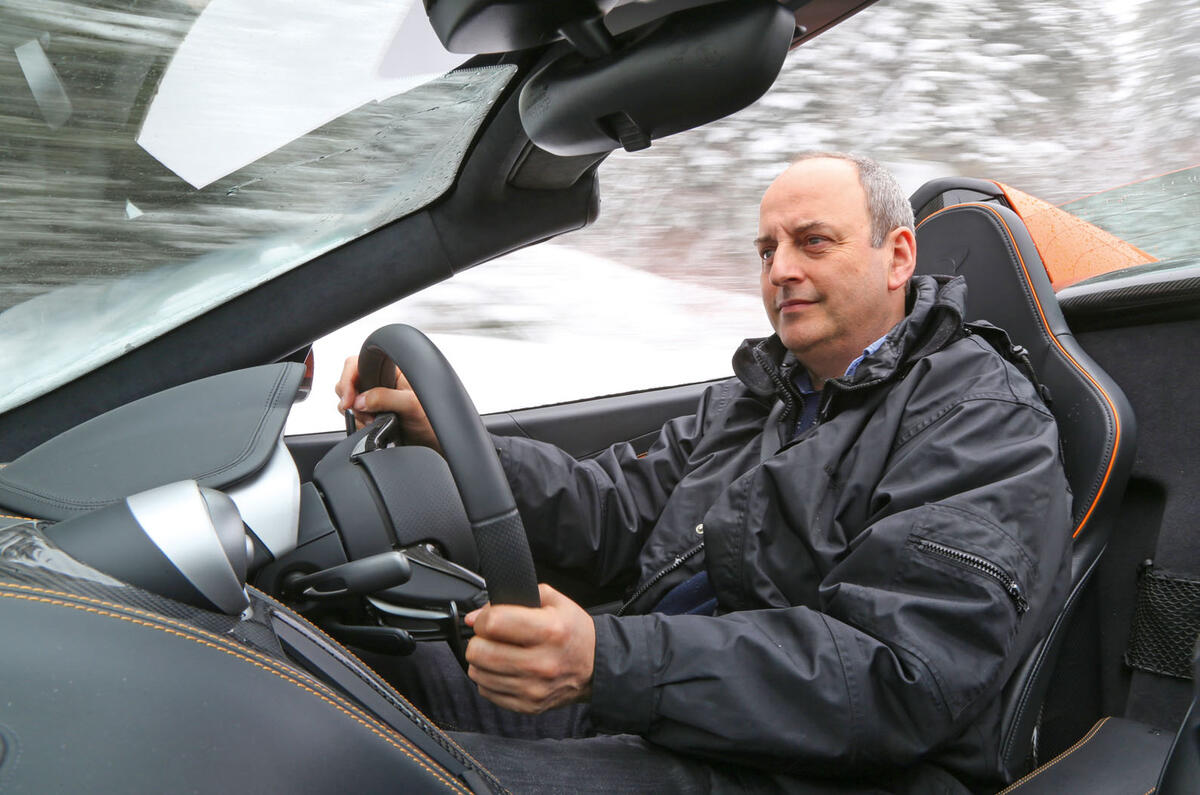
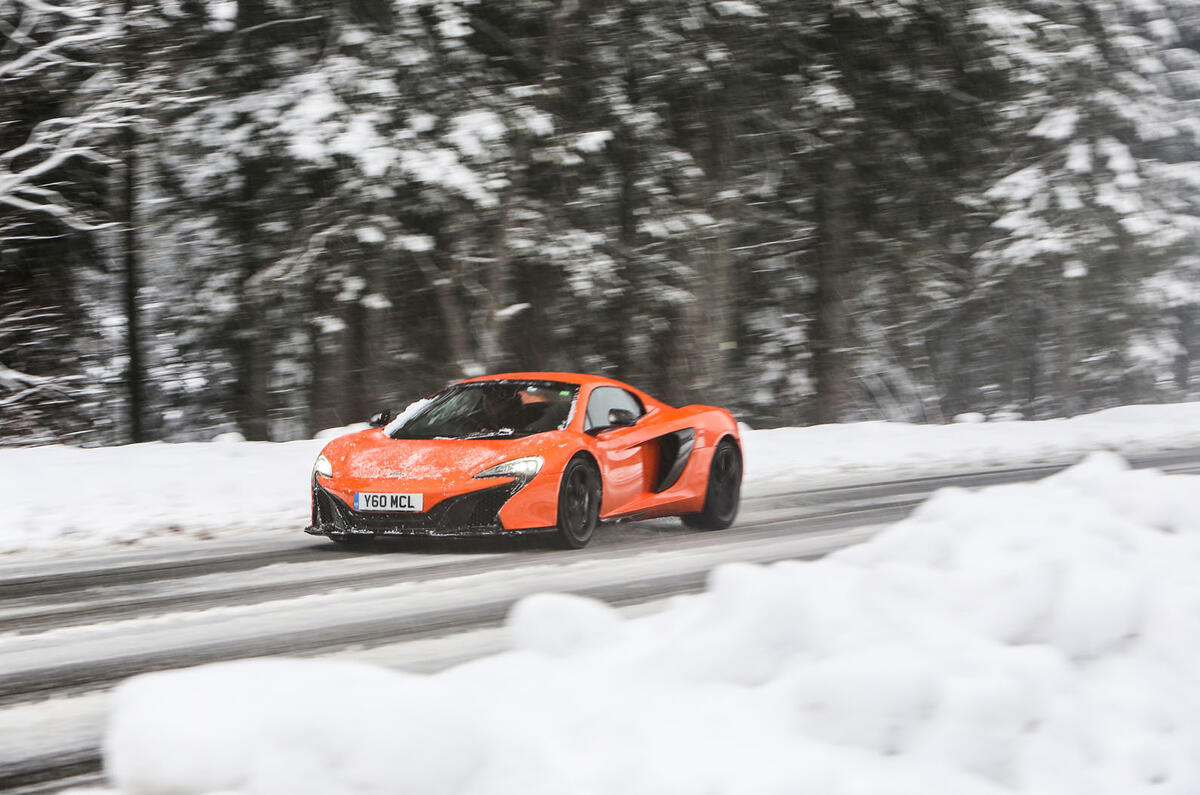
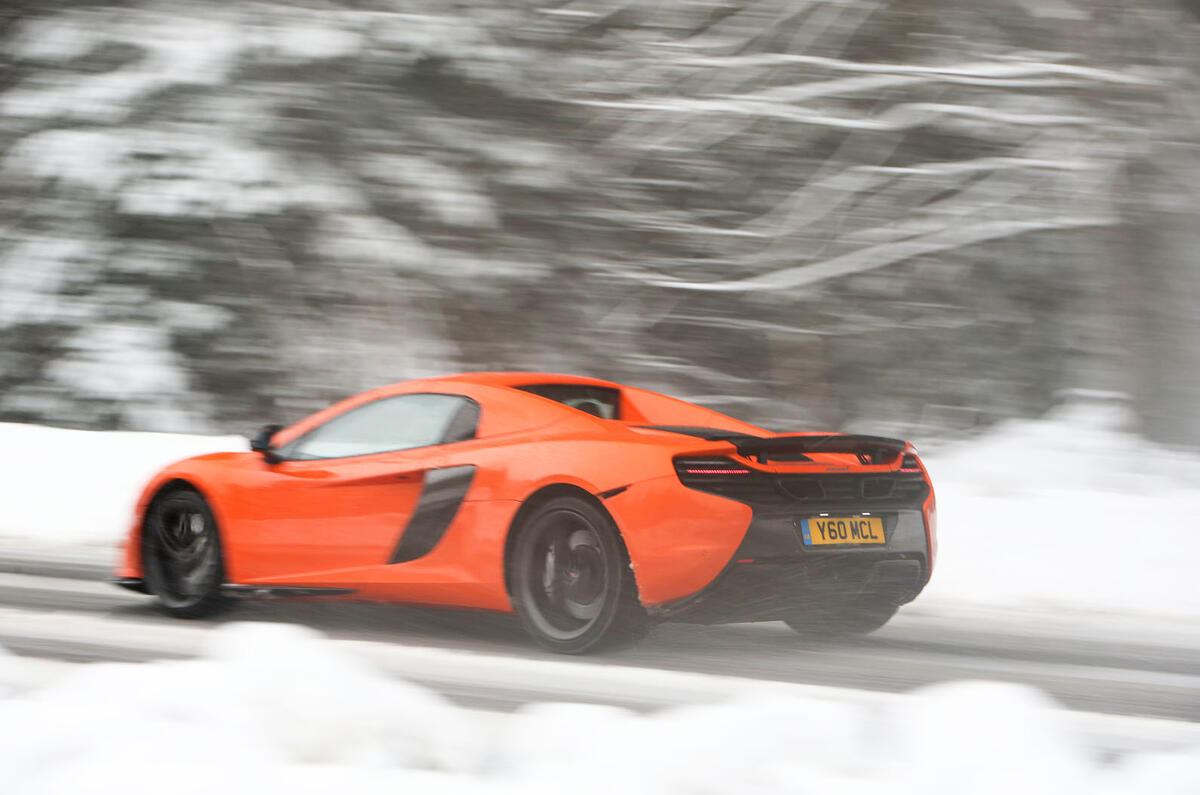
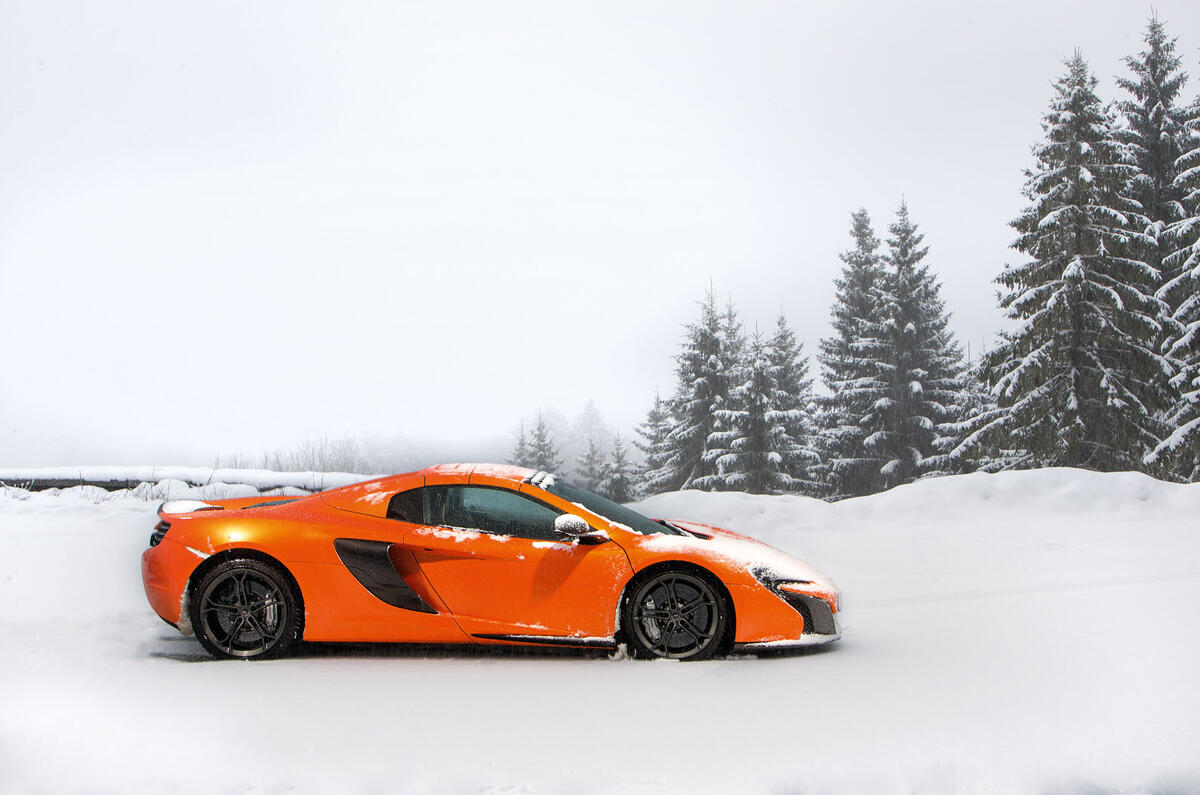
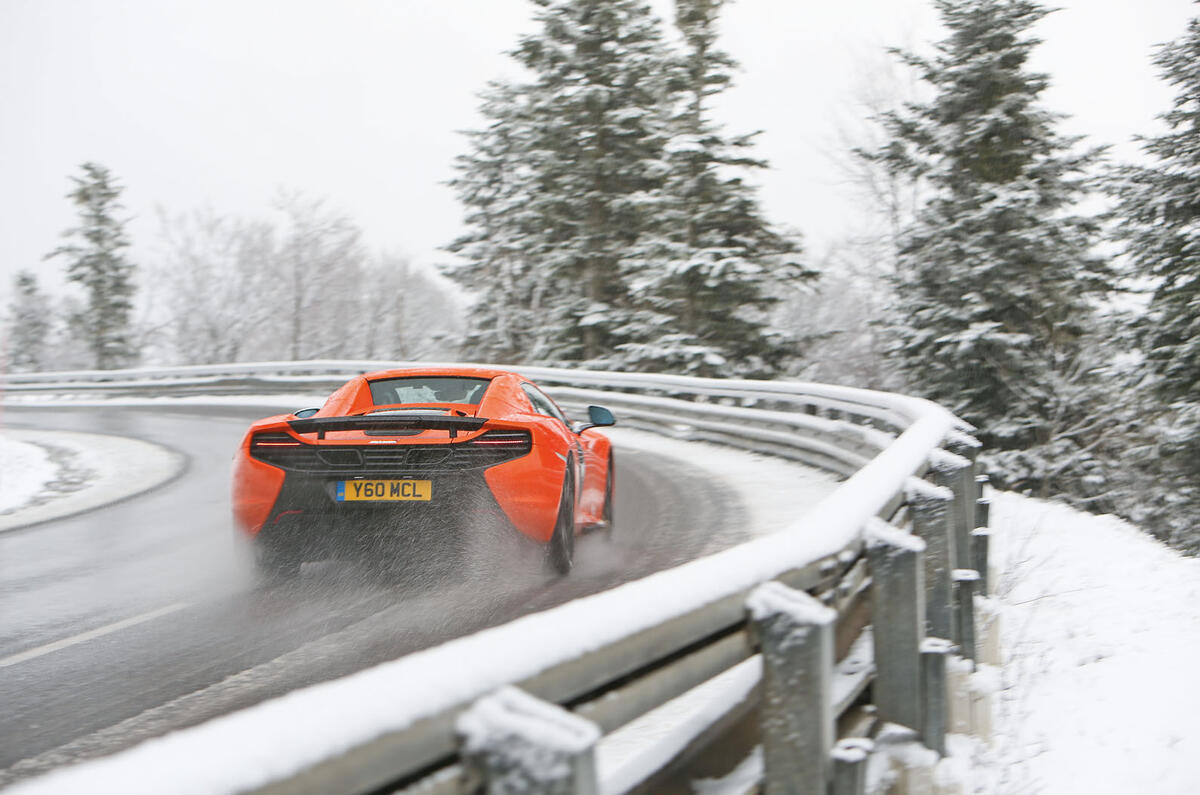
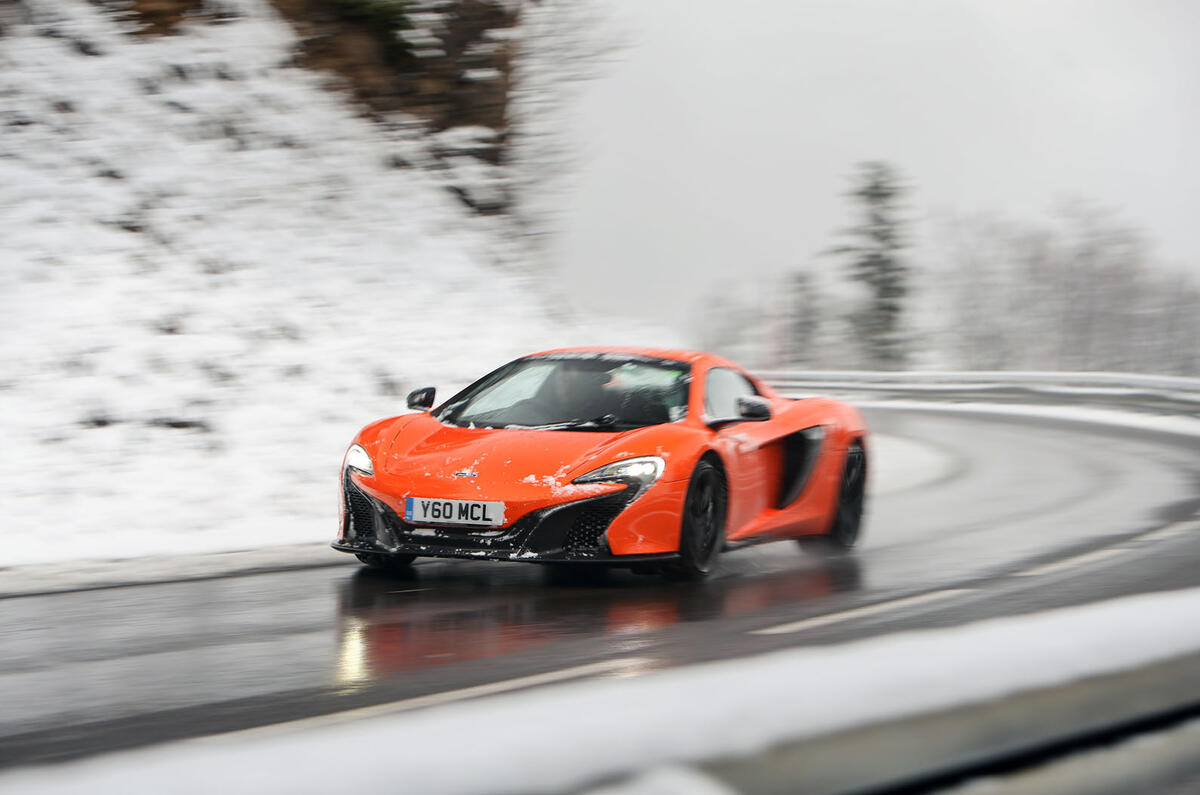
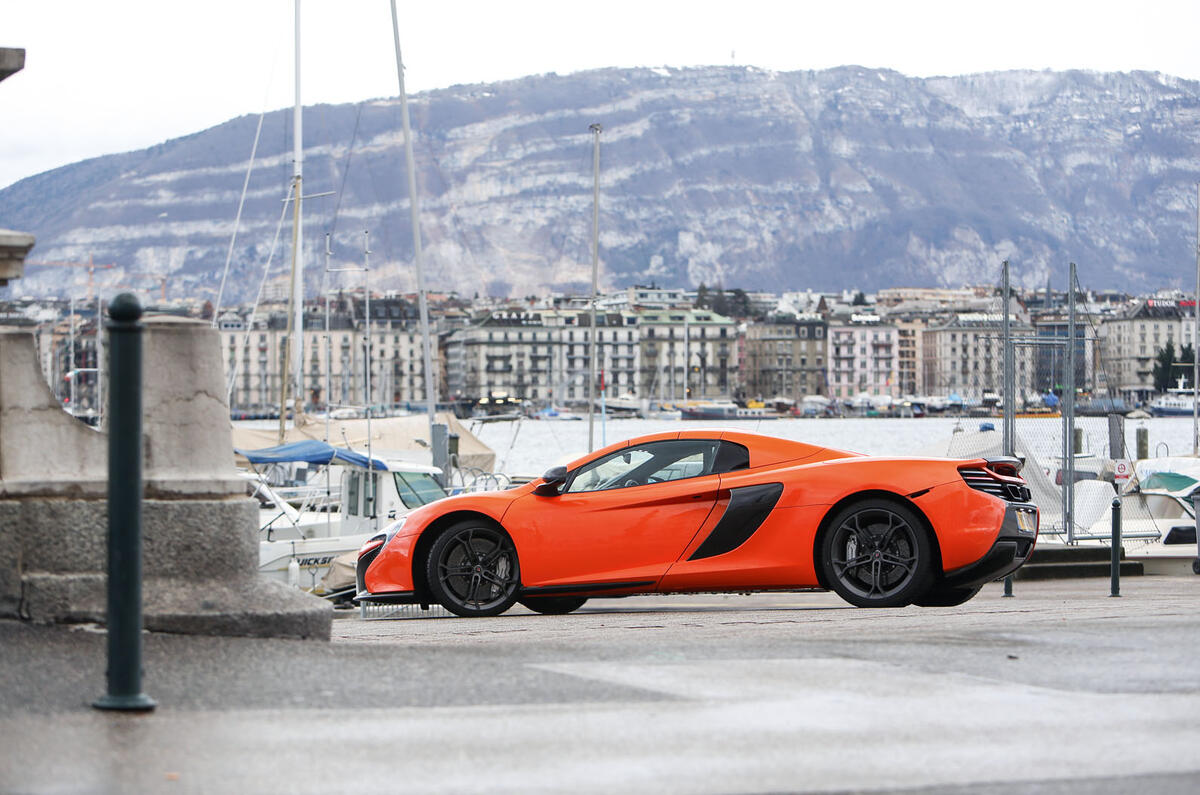
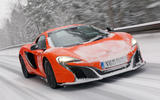
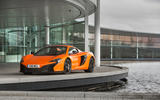
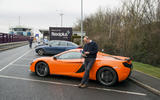


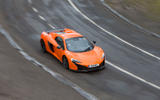
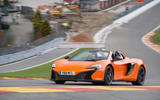
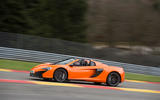
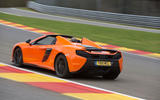

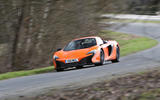
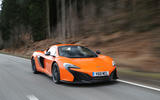
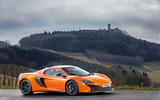
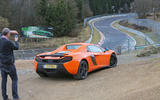
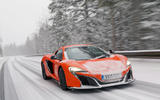



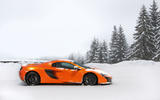

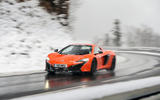
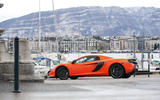


Join the debate
Add your comment
MP4-12C.
@6R4
jer wrote:
Yes really. After all, isn't the sentence you pick out exactly what McLaren themselves would say? Paraphrasing to how they might have put it, "we think our 650S remains great, but we've found we can do something even better". Still heaping praise on the old car, but claiming massive improvements for its replacement.
It's always the same with Autocar, their sacred trinity of McLaren, JLR and Ford can do no wrong. This is just one more instance of the blatant promotion of those brands on this site.
"Sponsored Content"